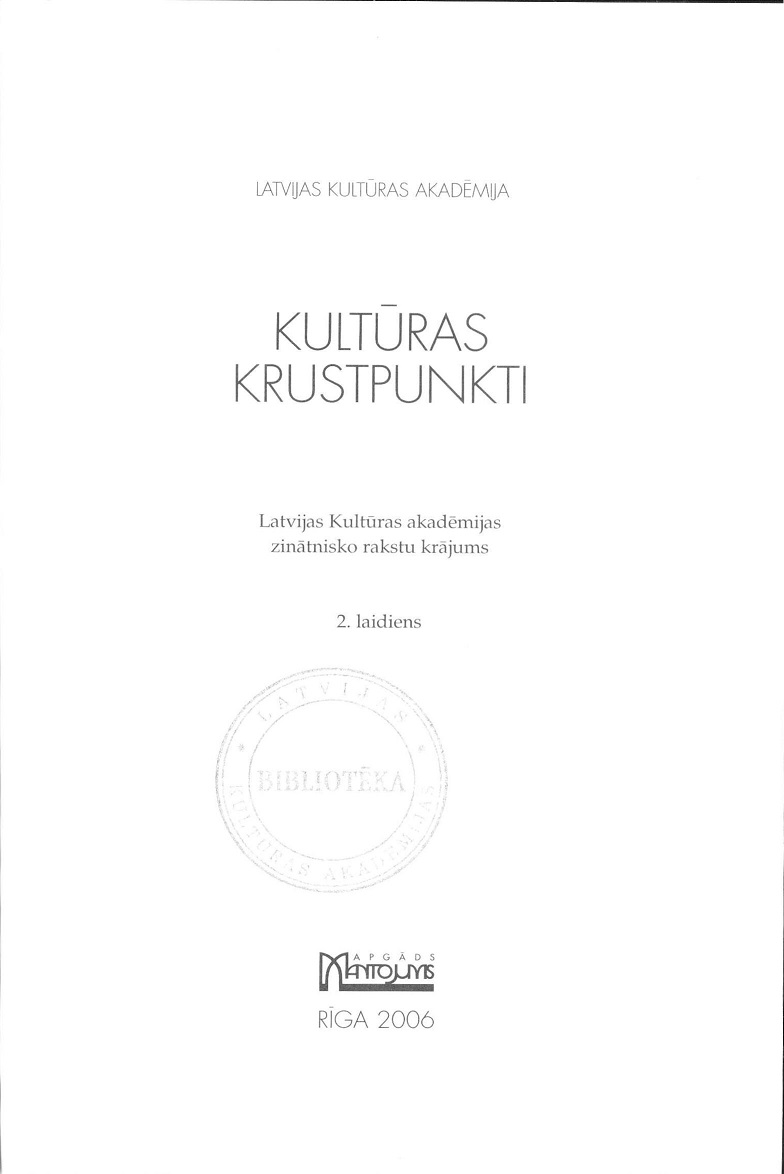Sigrijas Unsetes recepcija Latvijā
The Reception of Sigrid Undset in Latvia
Author(s): Maija BurimaSubject(s): Cultural history, Studies of Literature, Novel, Culture and social structure , Sociology of Culture
Published by: Latvijas Kultūras akadēmija
Keywords: Sigrid Undset; Norwegian writer; relationships among humans; mythology;
Summary/Abstract: Sigrid Undset (1882-1949) is one of the most famous Norwegian writers. S. focused mainly on the historical themes in the context of relationships among human beings, especially in gender context. The problems of religion are very important in her creative works. Christianity is one of the dominating themes in her literary works; at the same time a lot of mythological motives are pointec out. S. Undset was awarded Nobel Prize in 1928. Almost all Undset's literary works have been translated into the Latvian language. The first translation was published in 1909, but from 1936 till 1937 the collected works in 16 volumes were published in Latvia. S. Undset influenced many Latvian authors, but not all of the influences ari apparent, thus they are difficult to identify. The similarities between Undset an (Latvian authors are mainly visible on spiritual level. Latvian writers and readers accepted S. Undset's literary works because they were looking in them for: their own "mirror" reflection - the similarities with their own style and expression; the differences - specific features of the North and Norwegian local colour-mg. Well known Latvian writer Zenta Mauriņa's essay "S. Undset's world" was dedicated to the Norwegian writer's personality and creative work. The most stroking; similarities observed by Z. Mauriņa were the modeling of female . Undset's and Latvian writers' literary works This article shows similarities between Undset's most popular literary work trilogy "Kristin Lauransdatter" and Latvian author Ilona Leimane's royal Males cilts" ("Mother's Tribe"). Similarities can be observed on the level of themes (themes of love, hatred, destiny, etc.) on the level of literary characters mother, parents, etc.) and literary images and details (a ring, a cross, etc.).
Journal: Culture Crossroads
- Issue Year: 2/2006
- Issue No: 1
- Page Range: 43-59
- Page Count: 17
- Language: Latvian

